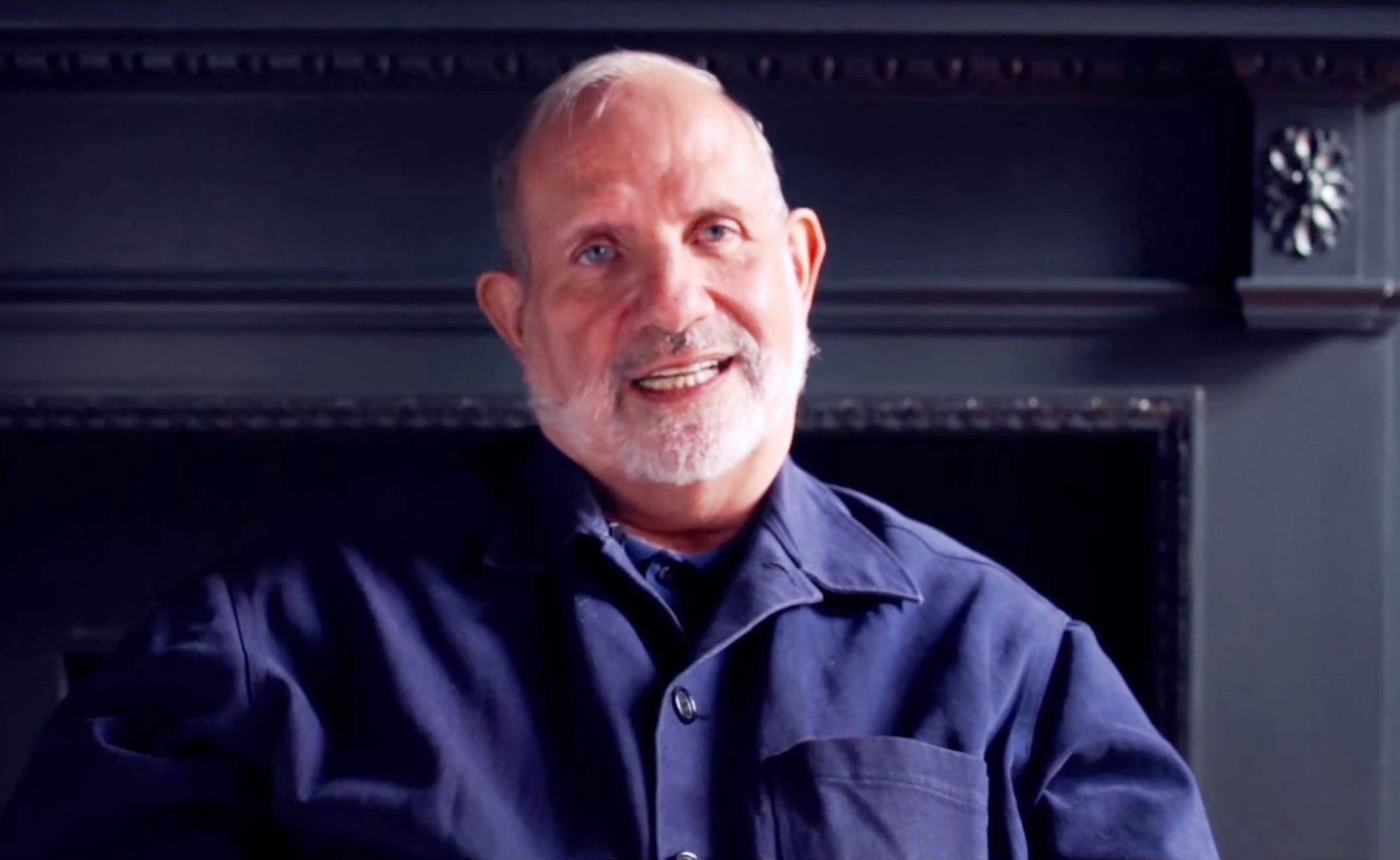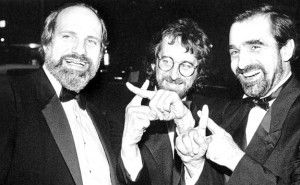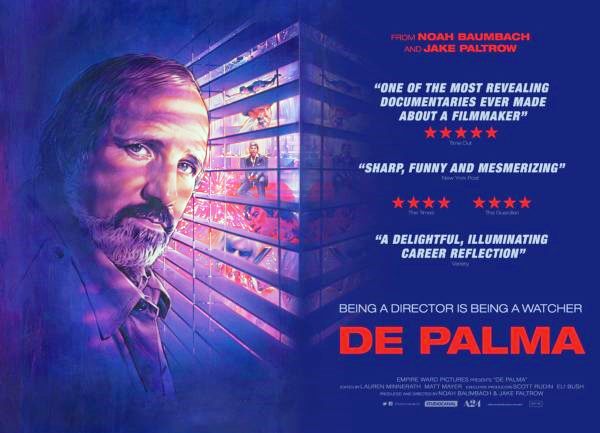
“Holy Mackerel!” That’s the enthusiastic pet phrase of the master stylist Brian De Palma as he talks about his life and career in the new career-capping documentary. De Palma is the legendary director talking directly and candidly to the camera for a little under two hours, and that’s easy for me to watch because, one, he is no-nonsense, two, we get irresistible clips of every film made chronologically, and three, he’s one of my fifteen favorite directors. The unusual thing is that only two of his I consider masterpieces, “Carrie” (1976) – which just misses my top 100, though I should always re-evaluate that! – and his unapologetically serious and deeply devastating “Casualties of War” (1989), but his full resumé is a great and constantly entertaining body of work.
The documentary is best when De Palma is dishing gossip. “Oh please, De Palma, lay it bare!” I whooped. I love hearing the war stories he has on old movies, such as when he had two competing screenwriters on “Mission: Impossible” re-writing scenes during the shoot while staying in two neighboring hotels, both vying for credit. It’s irresistible to hear how Cliff Robertson on “Obsession” and Orson Welles on “Get to Know Your Rabbit” (his only completely unwatchable movie) were rotten to work with. And while De Palma got Robert De Niro his career jump start, by the time they reunited for “The Untouchables,” which would become one of De Palma’s biggest hits, De Niro’s ego and pay rates had inflated. De Palma is a great talker though, not a grouser. I love his flattery for Sean Penn for his work in both “Casualties of War” and “Carlito’s Way,” crediting Penn for improving not just the substance of the scenes but by goading better performances out of his co-stars.
He talks generously about “Scarface” (1983) but I wish he could have dished more on Al Pacino’s implied bombastic personality and then ingénue Michelle Pfeiffer taking on a big career risk. “Snake Eyes” (1999) was seemingly a bankrolled gift from a major Hollywood studio, but De Palma says nothing about why Nicolas Cage was chosen for it. Or Gary Sinise for that matter.
My love for his work blooms nonetheless. I must sound like a sycophant, but my fave five De Palma films are “Carrie,” “Casualties of War,” “Carlito’s Way,” “Femme Fatale” and “Blow Out.” I still think “Mission: Impossible” is one of the most clever, and deliciously crafted movies to come out of the blockbuster era and while the common carp is that it makes no sense, watch it again closely, you will see the subtleties of a complex plot coherently at work. I’ve seen “Body Double” (1984) twice, and found that I re-interpreted it two different ways and vow I have to see it again. “Scarface” (1983) was not a favorite of mine at first, yet it’s intoxicating once you start to see the scope of its ambition, and the violence is ultimately both disgusting and thunderously exciting. And while “The Bonfire of the Vanities” (1990) and “Mission to Mars” (2000) are disasters, ones that De Palma admits as so, I tend to find more watchable qualities in them than most critics at large (am I wrong to say, as off the rails as those pictures go, they still have seven to eight magnetic scenes in them?). I am surprised the iconoclast director is so hard on “The Fury” (1978), a bonkers thriller that’s eccentric enough to catch my fancy. “Dressed to Kill” (1980) is an essential, but only moderately exciting entry, yet now I see why it seems more important to De Palma than to me. I love hearing about the behind-the-scenes on all these movies.
 Yet here’s a few minor gripes: Why does De Palma take a swing at Tom Hanks and not Bruce Willis, the latter who obviously gave the most bogus performance, one that was a careless and cash-in the paycheck performance, in “Vanities?” And it’s a rather huge fan nerd moment for me to see him in old photographs and home movies hanging out with the new wave of young gun directors who were brats before they were geniuses: Spielberg, Scorsese, Lucas and Coppola. Yet there’s this nagging feeling that he had a falling out with them, yet De Palma doesn’t dish on it. I can imagine George Lucas getting pissed at a scene in De Palma’s “Body Double” where a woman is eviscerated by a power drill and, since its known Lucas drops people at a whim, threw his friendship with De Palma out because of that. Or because of another reason more petty.
Yet here’s a few minor gripes: Why does De Palma take a swing at Tom Hanks and not Bruce Willis, the latter who obviously gave the most bogus performance, one that was a careless and cash-in the paycheck performance, in “Vanities?” And it’s a rather huge fan nerd moment for me to see him in old photographs and home movies hanging out with the new wave of young gun directors who were brats before they were geniuses: Spielberg, Scorsese, Lucas and Coppola. Yet there’s this nagging feeling that he had a falling out with them, yet De Palma doesn’t dish on it. I can imagine George Lucas getting pissed at a scene in De Palma’s “Body Double” where a woman is eviscerated by a power drill and, since its known Lucas drops people at a whim, threw his friendship with De Palma out because of that. Or because of another reason more petty.
I wish De Palma laid it bare 100% of the time. He doesn’t, but still has revealed more about his victories and failures than any other documentary on directors is willing to.
I was full of unexpected gratitude most of the time. When I see De Palma clips of movies from his large repertoire that I have only seen once, like “Sisters” (1973) and “Wise Guys” (1985), and hear him talk about them, I confess I am more intrigued to see them again. Both of those I once marked off in my notepad as three-star movies yet never wrote reviews on them. I’m inspired to go back again.
De Palma is in his 70’s now and admits he is slowing down. “Passion,” a hit and miss Rachel McAdams and Noomi Rapace thriller in 2012, was his last movie, and he’s in pre-production with a new one called “Lights Out.” I’ll be spending my life re-watching De Palma movies until I die, even the hit and miss ones, because there’s just something about them. Which is the mark of a great director. Of course, De Palma was one who worked in the tradition of Hitchcock. What sets De Palma apart is the salacious and dangerous material he worked with, the sultry women in them, the way he worked in the realm of pure cinema that emphasized visuals over dialogue in key scenes, the way he slowed down time, and did them with his signature elegant camerawork. He did them all his way without batting an eye.
Directed by Noah Baumbach and Jake Paltrow, friends of De Palma.
109 Minutes. Rated R.
DOCUMENTARY / MOVIE LOVE / AFTER HOURS VIEWING
Film Cousins: “Hearts of Darkness: A Filmmaker’s Apocalypse” (1991); “Stanley Kubrick: A Life in Pictures” (2001); “Room 237” (2013); “Jodorowsky’s Dune” (2013).





